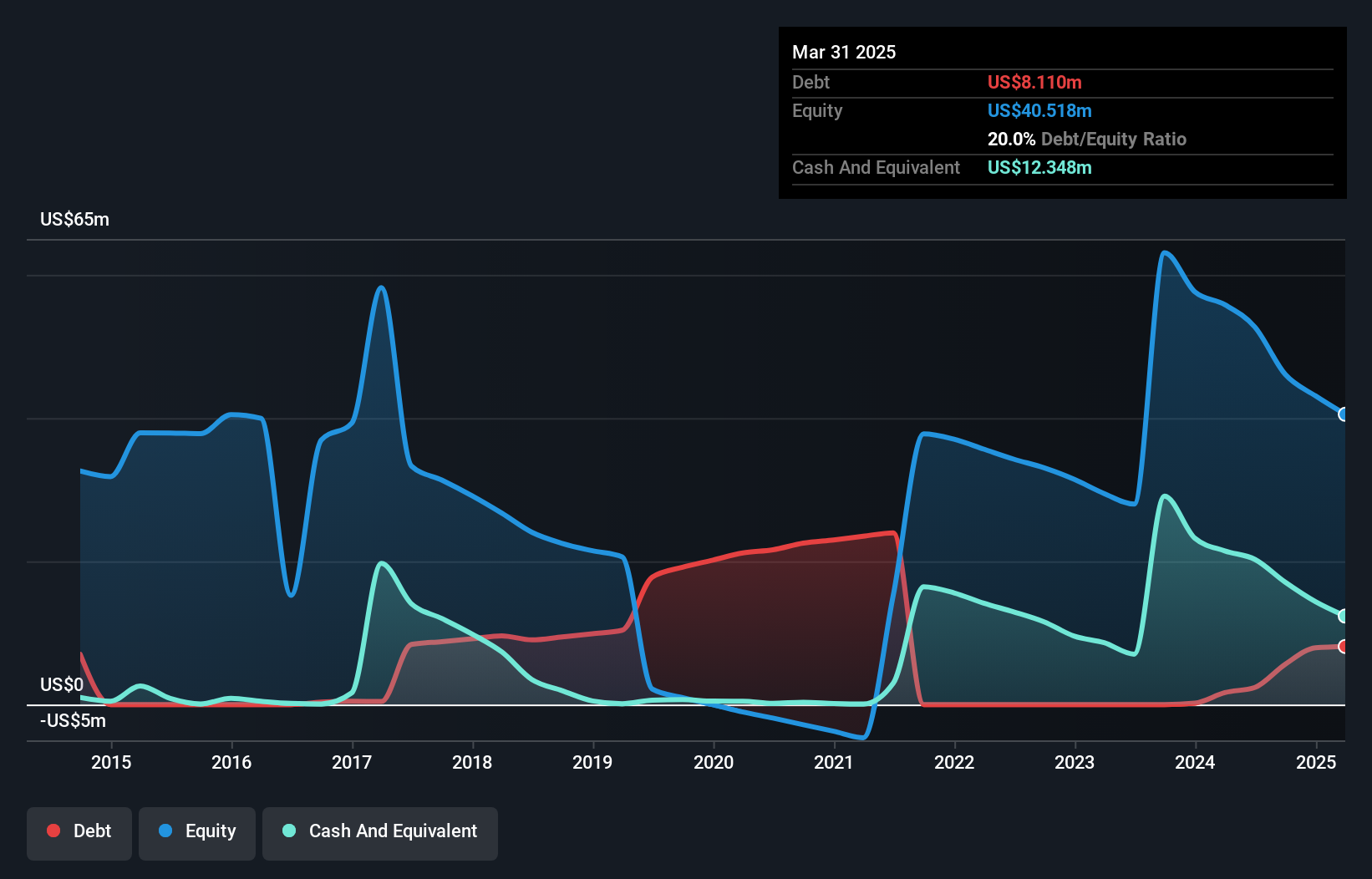- Canada
- /
- Metals and Mining
- /
- TSXV:HI
Highland Copper (CVE:HI) Has Debt But No Earnings; Should You Worry?
Warren Buffett famously said, 'Volatility is far from synonymous with risk.' It's only natural to consider a company's balance sheet when you examine how risky it is, since debt is often involved when a business collapses. We can see that Highland Copper Company Inc. (CVE:HI) does use debt in its business. But the more important question is: how much risk is that debt creating?
What Risk Does Debt Bring?
Debt is a tool to help businesses grow, but if a business is incapable of paying off its lenders, then it exists at their mercy. In the worst case scenario, a company can go bankrupt if it cannot pay its creditors. However, a more frequent (but still costly) occurrence is where a company must issue shares at bargain-basement prices, permanently diluting shareholders, just to shore up its balance sheet. Of course, plenty of companies use debt to fund growth, without any negative consequences. When we think about a company's use of debt, we first look at cash and debt together.
How Much Debt Does Highland Copper Carry?
The image below, which you can click on for greater detail, shows that at March 2025 Highland Copper had debt of US$8.11m, up from US$1.66m in one year. But it also has US$12.3m in cash to offset that, meaning it has US$4.24m net cash.

How Strong Is Highland Copper's Balance Sheet?
Zooming in on the latest balance sheet data, we can see that Highland Copper had liabilities of US$924.5k due within 12 months and liabilities of US$10.2m due beyond that. On the other hand, it had cash of US$12.3m and US$58.3k worth of receivables due within a year. So it actually has US$1.27m more liquid assets than total liabilities.
This short term liquidity is a sign that Highland Copper could probably pay off its debt with ease, as its balance sheet is far from stretched. Succinctly put, Highland Copper boasts net cash, so it's fair to say it does not have a heavy debt load! The balance sheet is clearly the area to focus on when you are analysing debt. But it is future earnings, more than anything, that will determine Highland Copper's ability to maintain a healthy balance sheet going forward. So if you want to see what the professionals think, you might find this free report on analyst profit forecasts to be interesting.
Check out our latest analysis for Highland Copper
Given its lack of meaningful operating revenue, investors are probably hoping that Highland Copper finds some valuable resources, before it runs out of money.
So How Risky Is Highland Copper?
Statistically speaking companies that lose money are riskier than those that make money. And we do note that Highland Copper had an earnings before interest and tax (EBIT) loss, over the last year. Indeed, in that time it burnt through US$9.0m of cash and made a loss of US$16m. But at least it has US$4.24m on the balance sheet to spend on growth, near-term. Even though its balance sheet seems sufficiently liquid, debt always makes us a little nervous if a company doesn't produce free cash flow regularly. The balance sheet is clearly the area to focus on when you are analysing debt. But ultimately, every company can contain risks that exist outside of the balance sheet. Case in point: We've spotted 2 warning signs for Highland Copper you should be aware of, and 1 of them doesn't sit too well with us.
If you're interested in investing in businesses that can grow profits without the burden of debt, then check out this free list of growing businesses that have net cash on the balance sheet.
Valuation is complex, but we're here to simplify it.
Discover if Highland Copper might be undervalued or overvalued with our detailed analysis, featuring fair value estimates, potential risks, dividends, insider trades, and its financial condition.
Access Free AnalysisHave feedback on this article? Concerned about the content? Get in touch with us directly. Alternatively, email editorial-team (at) simplywallst.com.
This article by Simply Wall St is general in nature. We provide commentary based on historical data and analyst forecasts only using an unbiased methodology and our articles are not intended to be financial advice. It does not constitute a recommendation to buy or sell any stock, and does not take account of your objectives, or your financial situation. We aim to bring you long-term focused analysis driven by fundamental data. Note that our analysis may not factor in the latest price-sensitive company announcements or qualitative material. Simply Wall St has no position in any stocks mentioned.
About TSXV:HI
Highland Copper
Engages in the acquisition, exploration, and development of mineral properties in the United States.
Slight risk with mediocre balance sheet.
Market Insights
Weekly Picks


Crazy Undervalued 42 Baggers Silver Play (Active & Running Mine)


Fiducian: Compliance Clouds or Value Opportunity?

Willamette Valley Vineyards (WVVI): Not-So-Great Value
Recently Updated Narratives
China Starch Holdings eyes a revenue growth of 4.66% with a 5-year strategic plan

PSIX The timing of insider sales is a serious question mark


The Great Strategy Swap – Selling "Old Auto" to Buy "Future Light"
Popular Narratives


MicroVision will explode future revenue by 380.37% with a vision towards success


NVDA: Expanding AI Demand Will Drive Major Data Center Investments Through 2026





